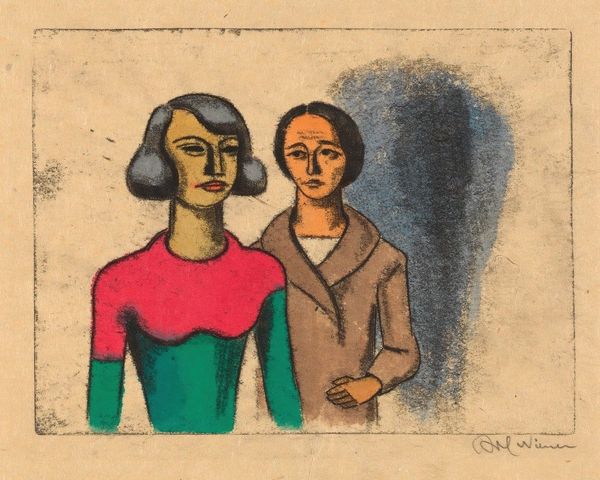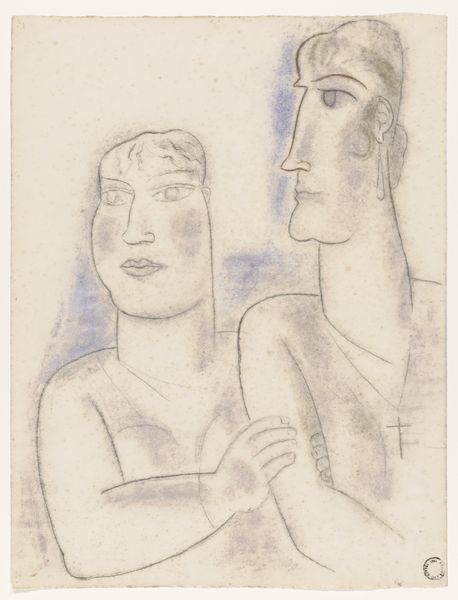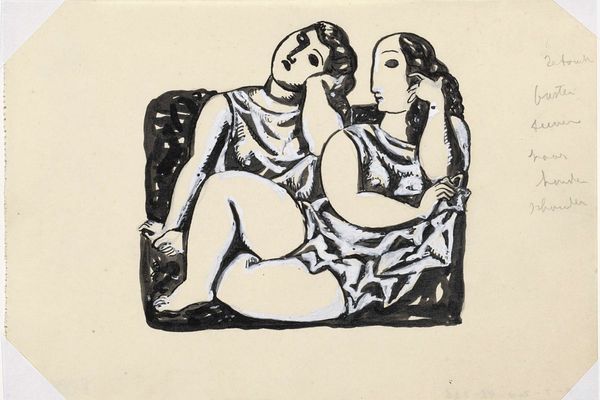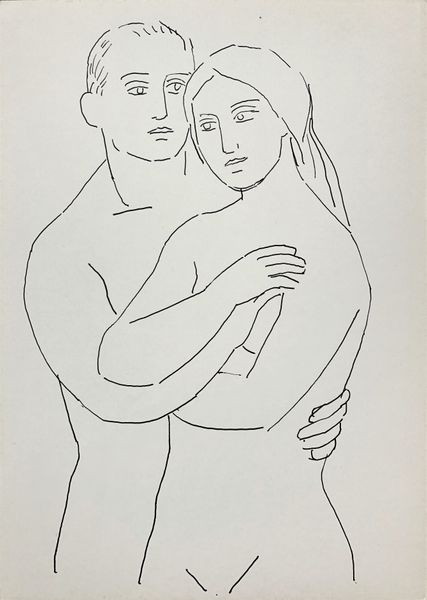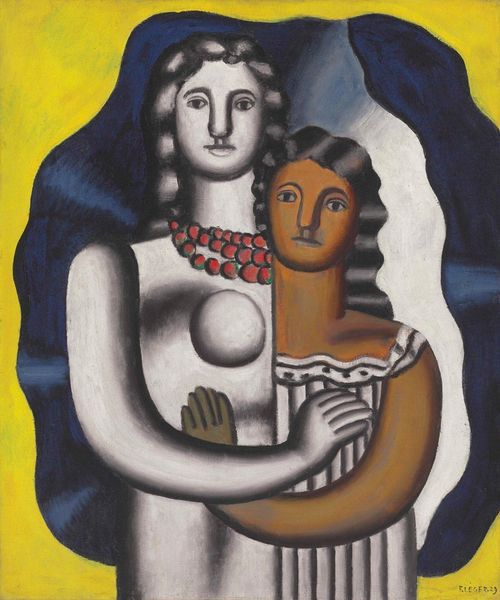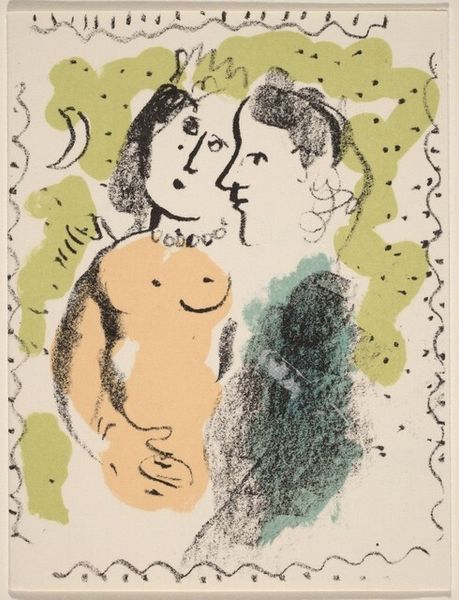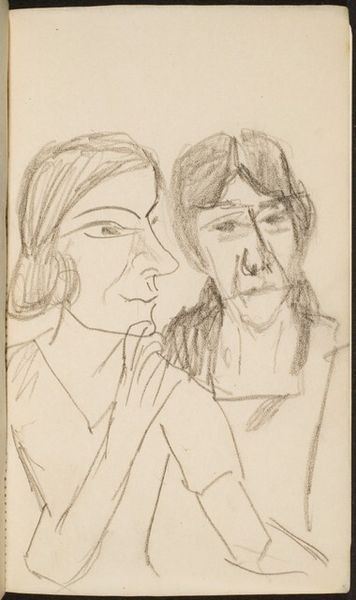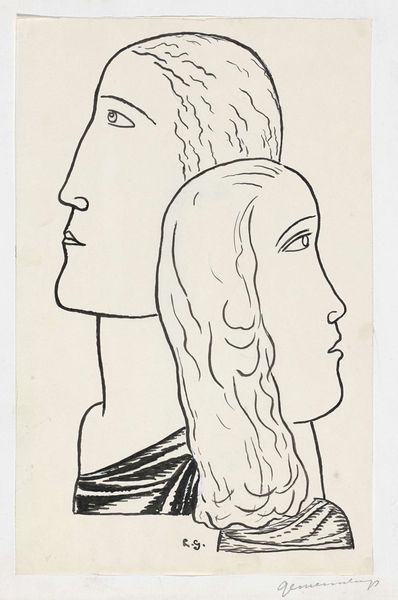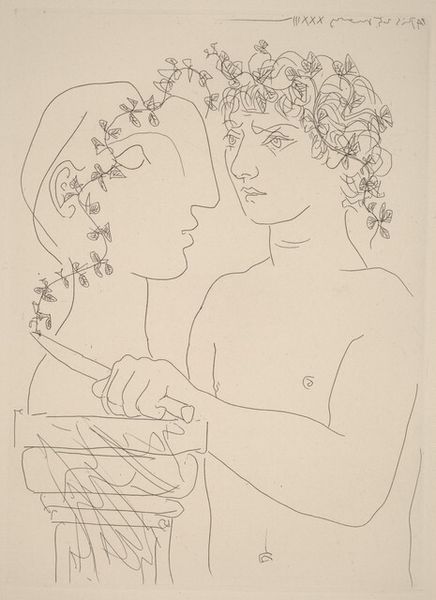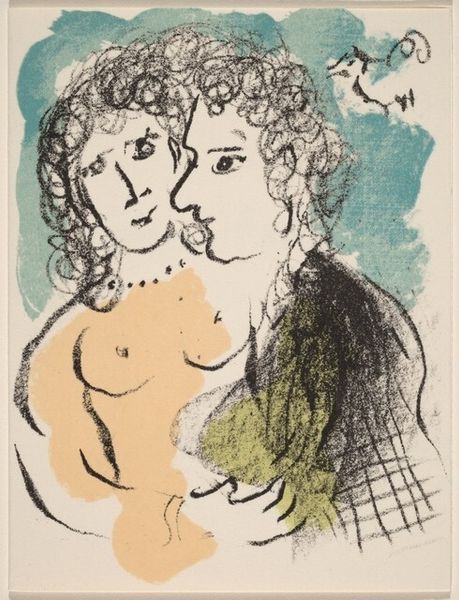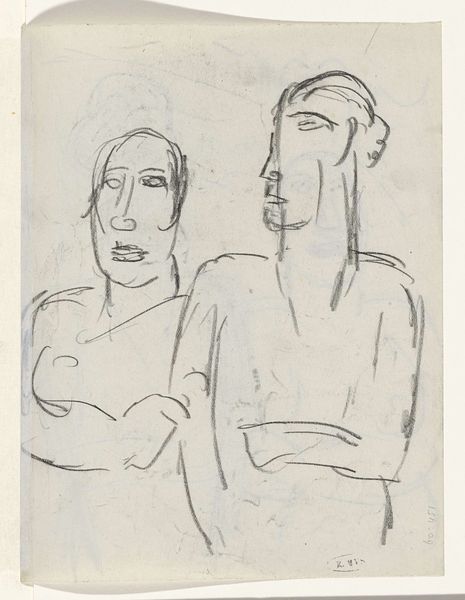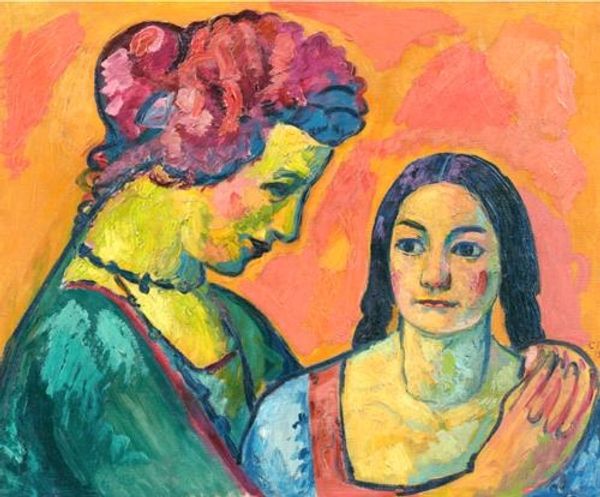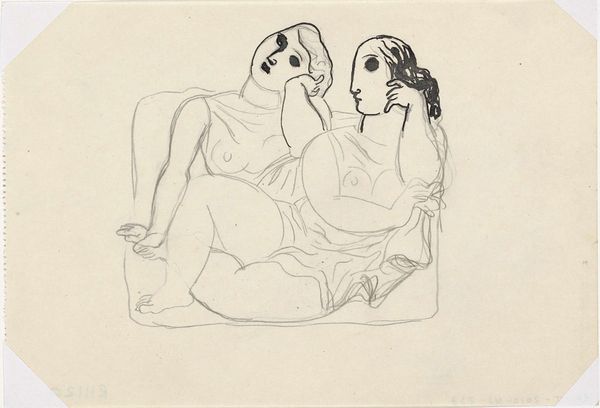
painting, oil-paint
#
portrait
#
cubism
#
painting
#
oil-paint
#
caricature
#
geometric
#
group-portraits
#
abstraction
#
portrait art
#
modernism
Dimensions: 50 x 65 cm
Copyright: Fernand Leger,Fair Use
Curator: Oh, this one is interesting! What strikes you first about it? Editor: The immediate impression is one of unsettling serenity, those vacant eyes amidst the harsh lines. It feels like peering into a strangely calm dream. Curator: Indeed. Here we have Fernand Léger's "The Two Faces," painted in 1951. Léger, of course, a pivotal figure in modernism and a master of tubular Cubism. Note the medium—oil paint bringing these forms to life. Editor: Léger's construction of form through the interplay of flat planes and stark outlines—the contrast of the mauve, almost bruised background against those bold contours. There's a flattening of perspective. We can almost see this being influenced by the machinic aesthetic which Léger was interested in.. Curator: Right! I'm really captivated by the geometric reduction, the way the faces become almost mask-like. This, to me, speaks volumes about Léger’s engagement with portraying the anonymous everyman, the figures stripped of unique, individual characteristics. It almost suggests the interchangeability, a kind of shared modern identity. I guess for me it is less calm and more isolating. Editor: The uniformity in style, particularly the eyes, removes individuality. It raises an interesting point of alienation. Each face only shows us the idea of a human face rather than a full range of expression that indicates what an individual may look like and feel, instead this leans toward geometric caricature. Curator: And the oddness is enhanced, of course, by the slightly cartoonish element of caricature which then creates an eerie, almost dystopian feel despite Léger's proclaimed utopian vision. It is like he saw the irony in trying to capture modern joy through mechanical rendering. Editor: Indeed! The subtle irony feels intentional. The flatness is deceptive because he gives some curvature and depth to the hair and to the bodies giving the figures both the flatness and dimensions of being human. He then challenges us to see the depth and lack of depth in the same picture at the same time. Curator: Exactly! I mean, seeing "The Two Faces" always feels to me like bumping into an old friend at a costume party: familiar, yet strangely, unnervingly, different. Editor: For me it feels like an illustration, Léger found a way to simplify art for easy viewing even when illustrating profound existential thoughts on the modern condition of our world.
Comments
No comments
Be the first to comment and join the conversation on the ultimate creative platform.
